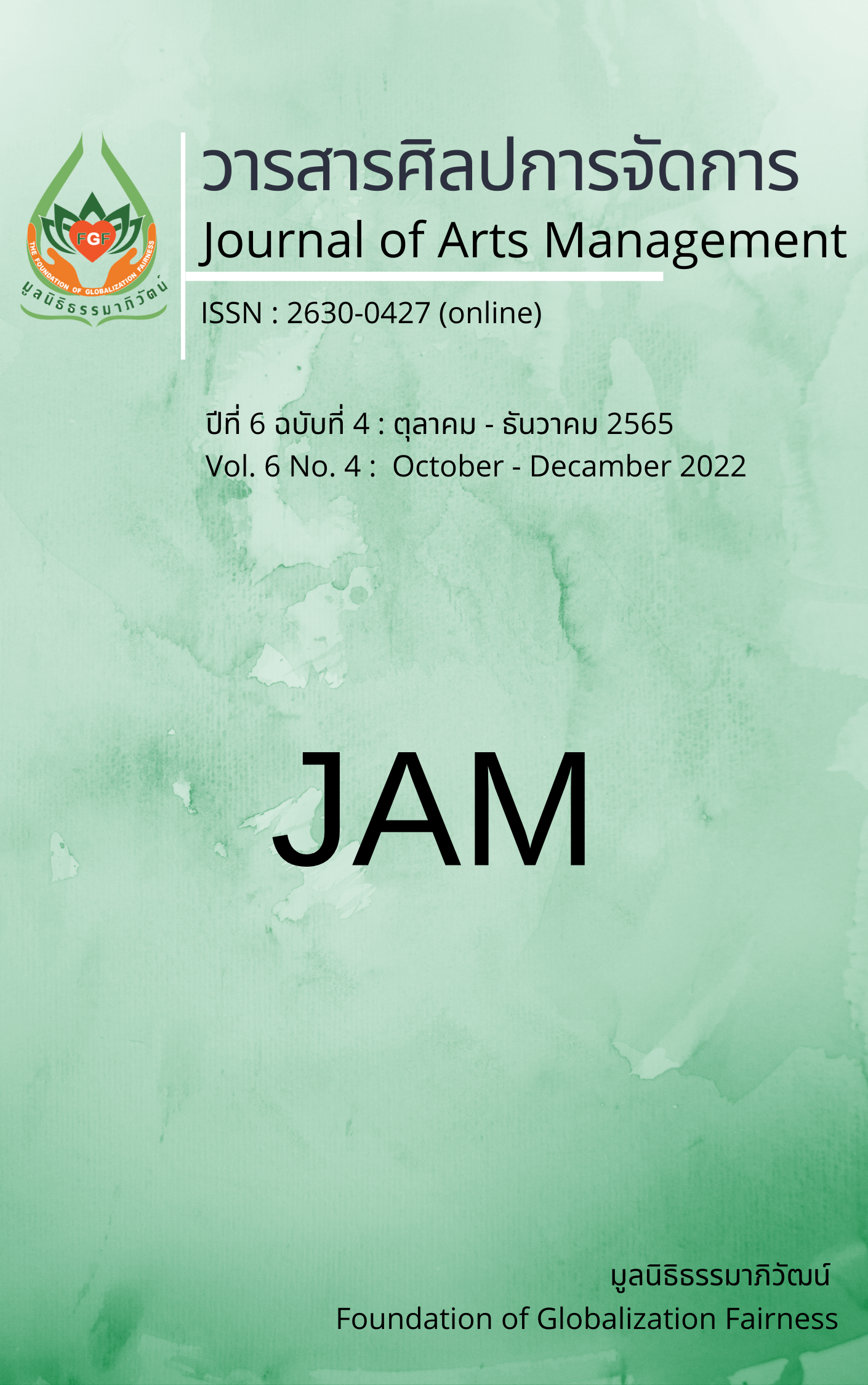The Development of Educational Management Model in The Digital Era for Secondary School in The Central Region Under the Office of The Basic Education Commission
Main Article Content
Abstract
The objectives of this research are as follows: 1) to study the factors of school management in the digital era 2) to examine the model of educational institution administration in the digital era and 3) to evaluate the model of educational institution administration in the digital era. The data was collected from a sample group of 381 school administrators and teachers of secondary schools in the central region under the Office of the Basic Education Commission by multi-stage random sampling and was analyzed by statistics software. The research instrument was a 5-level questionnaire with a IOC .60 -1.00 and a reliability value of 0.99. The results showed that 1. The factor of educational institution administration in the digital era for secondary schools in the central region Under the Office of the Basic Education Commission consists of 6 aspects: 1) director 2) teacher 3) learner 4) learning 5) technology and 6) process. 2. The model of educational institution administration model in the digital era for secondary schools in the central region Under the Office of the Basic Education Commission shows congruence with empirical data consists of 6 main components and 29 subcomponents with Relative Chi-square=0.977, CFI =1.00, TLI = 1.00, RMSEA = 0.000, SRMR=0.024. 3. The model of educational institutions administration model in the digital era for secondary schools in the central region Under the Office of the Basic Education Commission is accurate, appropriate, useful and feasible.
Article Details

This work is licensed under a Creative Commons Attribution-NonCommercial-NoDerivatives 4.0 International License.
Views and opinions appearing in articles in the Journal of Arts of Management It is the responsibility of the author of the article. and does not constitute the view and responsibility of the editorial team I agree that the article is copyright of the Arts and Management Journal.
References
Bruce, W., Devon, J., & Floyd, B. (2013). Planning for technology: A guide for school administrators, technology coordinators and curriculum leaders (2nd ed.). Corwin Press.
Chamchoi, S. (2015). Technology leadership: bringing technology to classrooms and schools in the 21st century. Journal of Education. Naresuan University, 17(4), 216-224.
Chantakul, P., & Chatrupracheewin, C. (2017). A model enhancing teacher competency in using information and communication technology for learning management of the 21st century. Journal of Education Naresuan University, 19(3), 225-237.
Ducker, P.F. (2003). A functioning society: Selections from sixty-five year of writing on community, society and policy. New Brunswick. https://doi.org/10.4324/9781315083599
Maesincee, S. (2007). The world has changed: Wealth in a new definition. Media Associated Company.
McMillan, H. J., & Schumacher, S. (1997). Research in Education: A Conceptual Introduction (4th ed). An imprint of Addison Wesley Longman.
Ministry of Technology and Communication. (2016). Summary of important results of the survey of the use of information and communication technology in household 2016. Ministry of Technology and Communication. http://service.nso.go.th/nso/nsopublish/themes/files/ icthh59.pdf
Panich, C. (2014). Creating learning for the 21st century. S. Charoen Printing.
Schmidt, E., & Cohen, J. (2014). Digital changes the world the new digital age (S. Sangsatsada, translator). Postbooks.
Schrum, L., & Prensky, M. (2012). Educational technology for school leaders. Corwin Press.
Secretariat of the Education Council. (2014). Guidelines for the development of Thai education and preparation for the 21st century. Prigwarn Graphic.
Sheninger, E. (2014). Digital Leadership: Changing paradigms for changing times. Corwin Press.
Sosnowski, J. (2012). Advantages and disadvantages of technology in education. https://classroom.synonym.com/
Toffler, A. (1995). The Third Wave (3rd ed.). (S. Tor et al., translators). Nanmeebook.


